It was a cold, windy day on 17 December 1903 when five people on the sand dunes of Kitty Hawk, North Carolina, witnessed Orville and Wilbur Wright make aviation history: the first successful flight of a powered aircraft with fixed wings – the first real airplane.
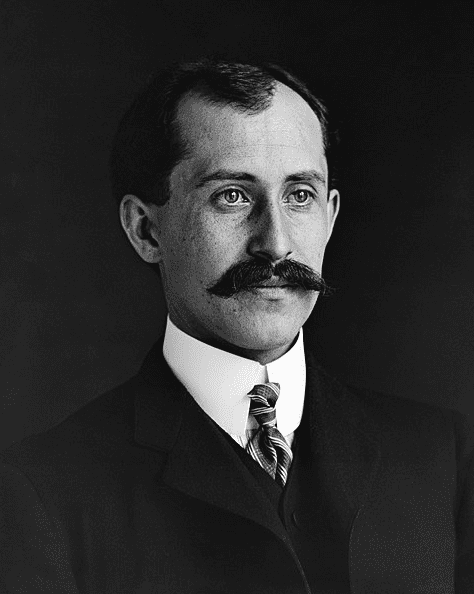

The brothers each made two flights that day, with Wilbur’s final flight the most successful, covering 852 feet and lasting 59 seconds. It is not much by today’s standards, but in 1903 it represented a historic first.
This amazing photograph shows the instant the Wright brothers achieved everlasting fame with their first flight.

The two brothers, bicycle mechanics from Dayton, Ohio, had been experimenting with gliders at Kitty Hawk since 1900. They chose that site because it was isolated and had steady breezes plus – a most important consideration – lots of soft sand for landings.
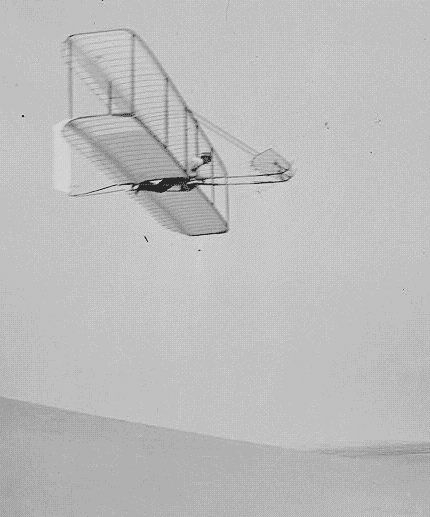
Over the years, other inventors had been experimenting with balloons, gliders, aircraft wings and engines. The Wright brothers’ breakthrough was in designing aircraft controls that enabled the pilot to adjust the plane’s wings and rudder to sustain flight. Their strong, lightweight plane, the Wright Flyer I, resembled a box kite constructed of spruce covered with fabric, powered by propellers designed and carved by the brothers and an engine built in their Ohio bicycle shop, all for less than a thousand dollars.
This photograph shows the actual airplane the Wright brothers built. The view is from the rear of the aircraft. A dummy in the center shows where the pilot lay while flying the airplane. To his right is the gasoline engine that powered the tall propellers – one on each side of the tail piece of the airplane.
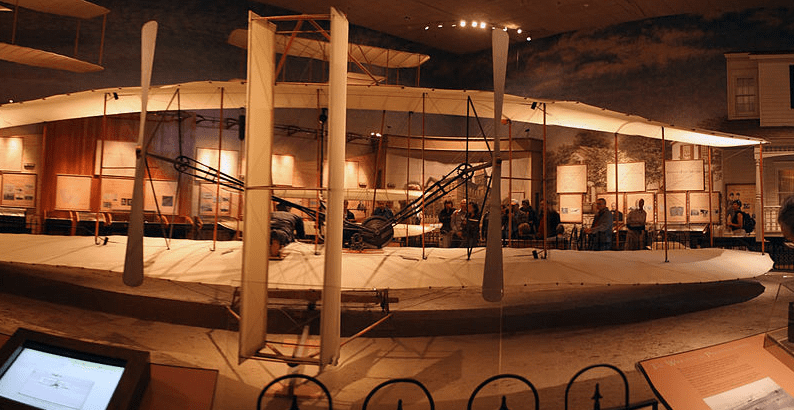
After the four historic flights that cold December day, the brothers were hauling their plane back up the beach when strong winds suddenly flipped the plane over and severely damaged it. The Wright Flyer I never flew again, but history had been made.
The Kansas City Star reported the flights on its front page, as did newspapers all across the country. The AP account contained some key errors: the plane flew 852 feet, not 3 miles, and its altitude was about 10 feet, not 60.
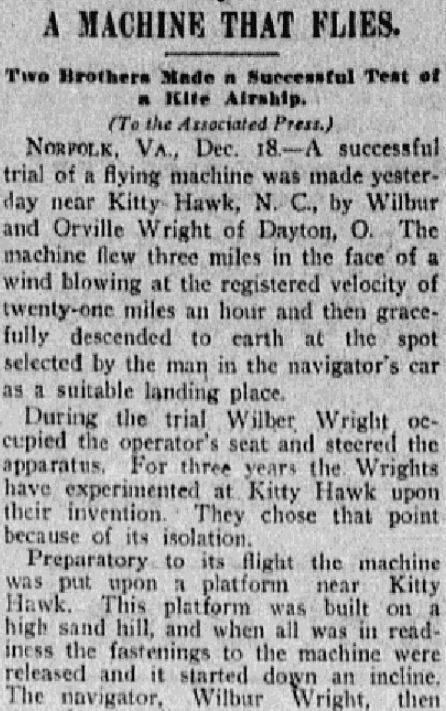
Here is a transcription of this article:
A MACHINE THAT FLIES.
Two Brothers Made a Successful Test of a Kite Airship.
(To the Associated Press.)
NORFOLK, Va., Dec. 18. – A successful trial of a flying machine was made yesterday near Kitty Hawk, N.C., by Wilbur and Orville Wright of Dayton, Ohio. The machine flew three miles in the face of a wind blowing at the registered velocity of twenty-one miles an hour and then gracefully descended to earth at the spot selected by the man in the navigator’s car as a suitable landing place.
During the trial Wilbur Wright occupied the operator’s seat and steered the apparatus. For three years the Wrights have experimented at Kitty Hawk upon their invention. They chose that point because of its isolation.
Preparatory to its flight the machine was put upon a platform near Kitty Hawk. This platform was built on a high sand hill, and when all was in readiness the fastenings to the machine were released and it started down an incline. The navigator, Wilbur Wright, then started a small gasoline engine which worked the propellers When the end of the incline was reached the machine gradually arose until it obtained an altitude of sixty feet. In the face of the strong wind blowing it maintained an even speed of eight miles an hour.
The Wrights have used the box kite idea in their invention, and their flying machine is nothing more than an immense kite, with propellers and steering attachment. Its frame is of wood, stretched with canvas, and its dimensions, as accurately as can be secured, are here given: The width of the box is thirty-three feet from tip to tip. Its depth from front to rear is eight feet, and its height about the same. In the center of this frame is constructed the navigator’s car, where the engine below it is used as a ballast. Directly beneath the car and arranged so as to push upward is the immense propeller used for elevating the machine, and extending horizontally to the rear is the propeller that gives motion forward, which is about the same size as its companion beneath.
This concluding paragraph from another newspaper article, published in 1904, credits the Wright brothers with achieving a historic triumph, a first in the history of humankind: their airplane “is the first of its kind to take a man up in the air and land him successfully.” The reference to Langley is to Samuel Langley, secretary to the Smithsonian Institution and an early aviation pioneer.
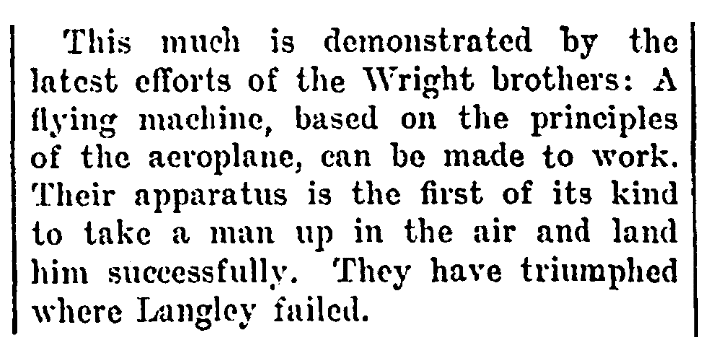
Note: An online collection of newspapers, such as GenealogyBank’s Historical Newspaper Archives, is not only a great way to learn about the lives of your ancestors – the old newspaper articles also help you understand American history and the times your ancestors lived in, and the news they talked about and read in their local papers.
